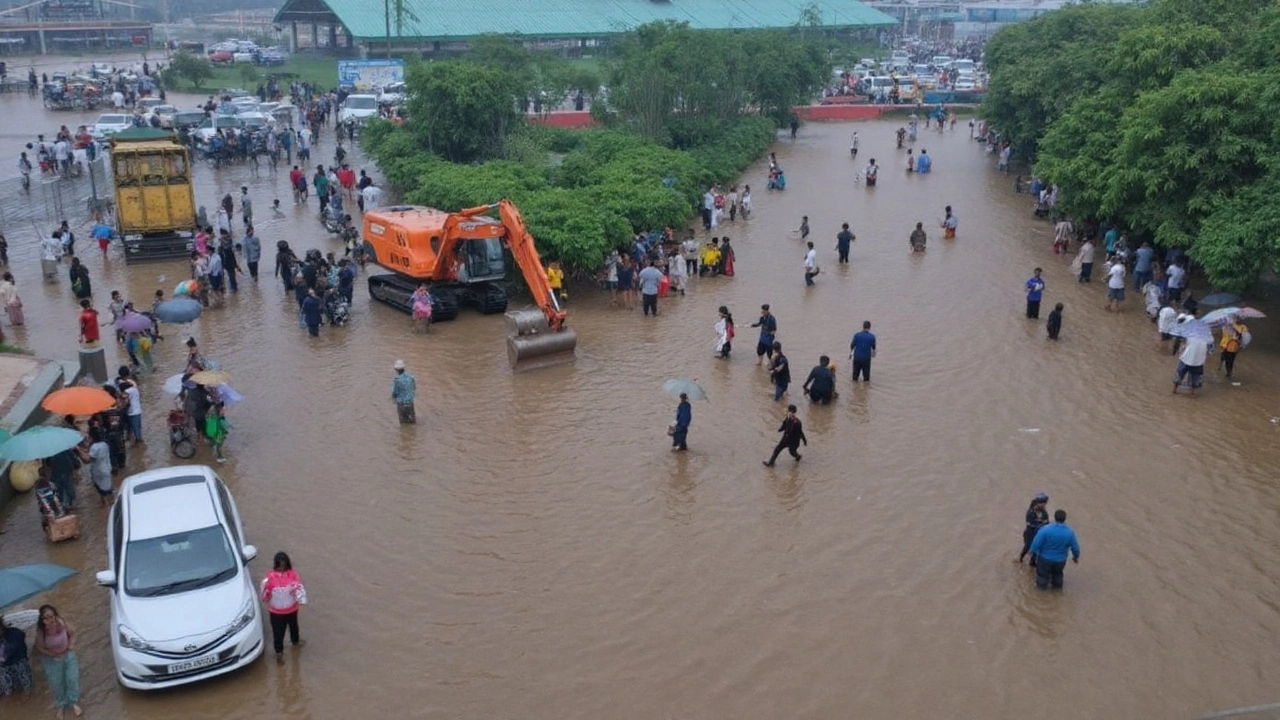Delhi Rainfall: Latest Alerts, Flood Risks, and Practical Tips
Heavy rain has become a regular part of Delhi’s weather, and staying ahead of the storm can save you a lot of trouble. Whether it’s a red‑alert from the IMD, waterlogging in low‑lying colonies, or sudden cloudbursts, knowing what’s happening and how to react is essential.
What the IMD is Saying Right Now
The India Meteorological Department (IMD) recently issued a red alert covering Delhi‑NCR and several surrounding states. The alert came after relentless downpours triggered flooding in Punjab and Uttar Pradesh, and a breach in a drain along the Haryana‑Delhi border forced evacuations. A low‑pressure system over the Bay of Bengal is feeding the rain, and experts expect September totals to exceed the long‑period average.
When the IMD raises a red alert, it means the situation is severe enough to cause significant damage. Expect road closures, disrupted public transport, and power outages in the most water‑prone areas. The agency also warns of landslides in hilly regions like Jammu & Kashmir, but for Delhi the main threat is waterlogging and flash floods.
How This Affects Daily Life in Delhi
Rainfall in Delhi isn’t just a splash on the windows; it can shut down entire neighborhoods. Areas near the Yamuna, old drainage lines, and low‑lying colonies are the most vulnerable. During the recent downpour, many residents faced water‑filled streets, stuck vehicles, and delayed school schedules.
Commerce also feels the pinch. Small shops near flooded roads see fewer customers, and delivery services face delays. If you run a business, have a backup plan for power and inventory storage, and keep an eye on local news for road clearance updates.
Health concerns rise too. Stagnant water can become a breeding ground for mosquitoes, leading to a spike in dengue and malaria cases. Keep your home dry, use repellents, and clear any standing water around your house.
Simple Steps to Prepare for Heavy Rain
1. **Check the IMD updates** – A quick glance at the IMD website or a reliable news app each morning tells you if an alert is in place.
2. **Secure your home** – Clear gutters, move valuables off the floor, and place sandbags if you live in a flood‑prone lane.
3. **Plan your commute** – Use alternative routes, consider public transport, and keep a charged phone for emergencies.
4. **Stay stocked** – Keep a small kit with water, snacks, a flashlight, and basic medicines. Power cuts are common during heavy storms.
5. **Help neighbors** – Elderly or disabled residents often need assistance moving to higher ground or moving belongings.
What to Do If You Get Caught in Waterlogging
If you find yourself stuck in a flooded street, stay calm and avoid walking through deep water. Even a few centimeters can be dangerous if there’s a hidden current. Look for higher ground, such as a nearby building’s roof or a raised platform. If you’re driving, abandon the car if water rises above the tires and move to safety on foot.
Report severe flooding to local authorities so that rescue teams can prioritize areas that need immediate help. In Delhi, the NDRF and SDRF are often on standby during monsoon weeks.
Looking Ahead: Monsoon Trends for Delhi
Climate patterns suggest that Delhi will see more intense rain events in the coming years. The city’s old drainage system struggles to keep up, and rapid urban growth adds to the problem. Keeping an eye on long‑term forecasts can help you plan for future infrastructure improvements and personal preparedness.
In short, Delhi rainfall isn’t going away, but you can control how much it disrupts your life. Stay updated, prepare early, and help those around you. That’s the best way to ride out the next storm without a hitch.

Heavy rain swamped Delhi-NCR, pushing the Yamuna to 207.44 m—just below the 1978 peak—and forcing a pause in cremations at Nigambodh Ghat. IMD alerts eased to yellow, but travel chaos persisted with 273 flight departures and 73 arrivals delayed. Key roads flooded near IGI Airport and along the Outer Ring Road as police issued diversions. Rainy spells are likely through Sept 7, with air quality staying satisfactory.
